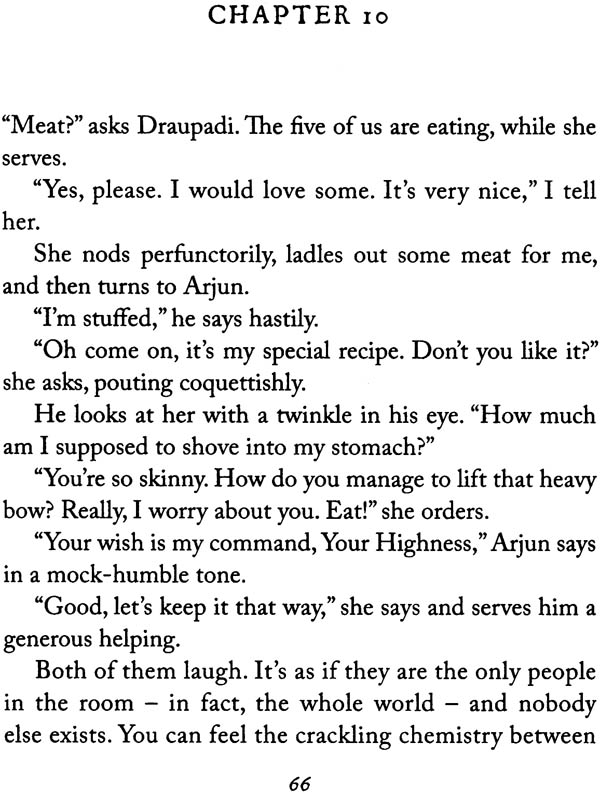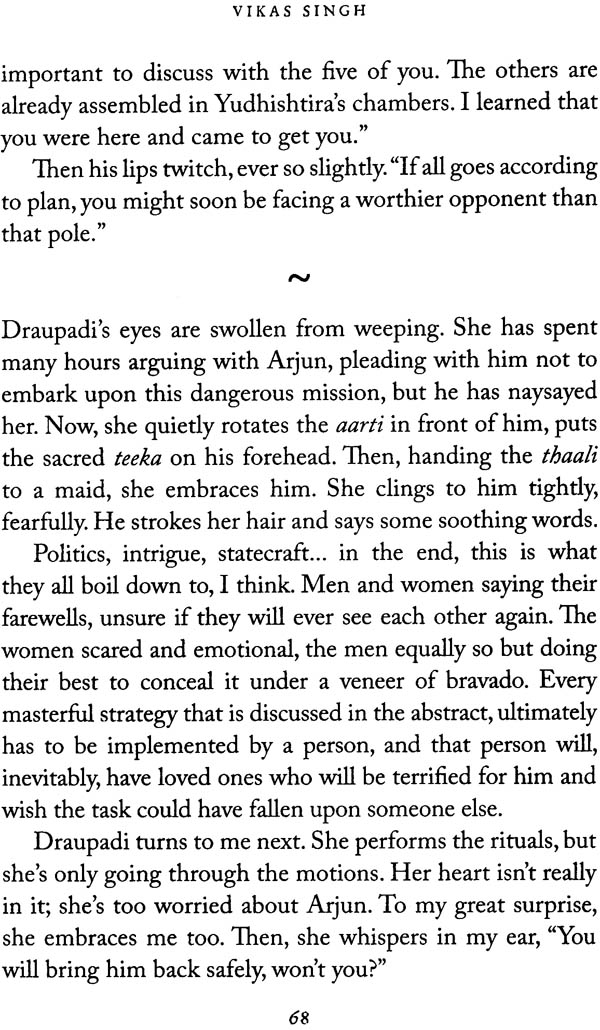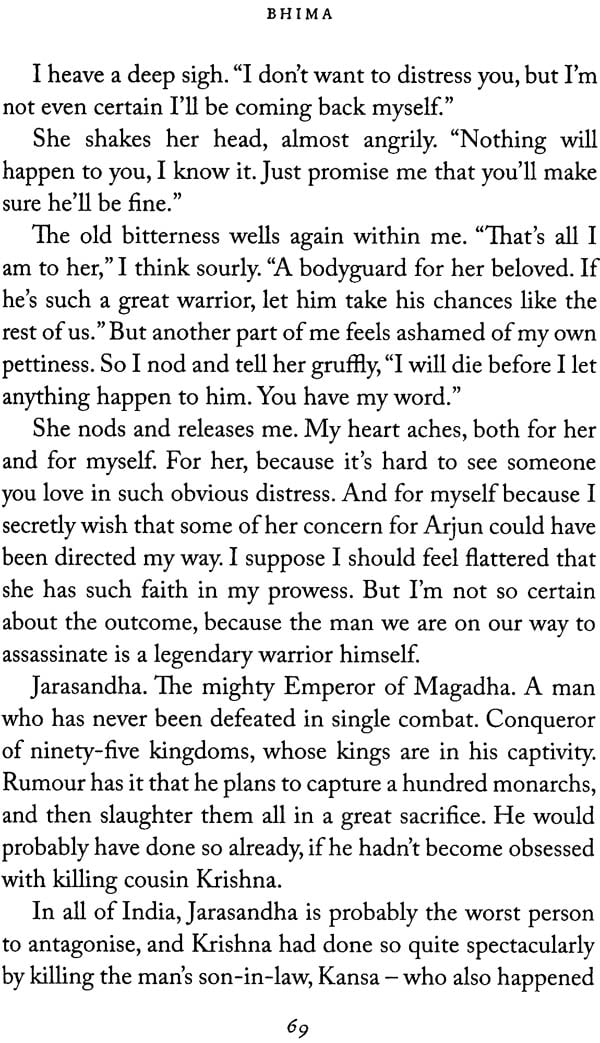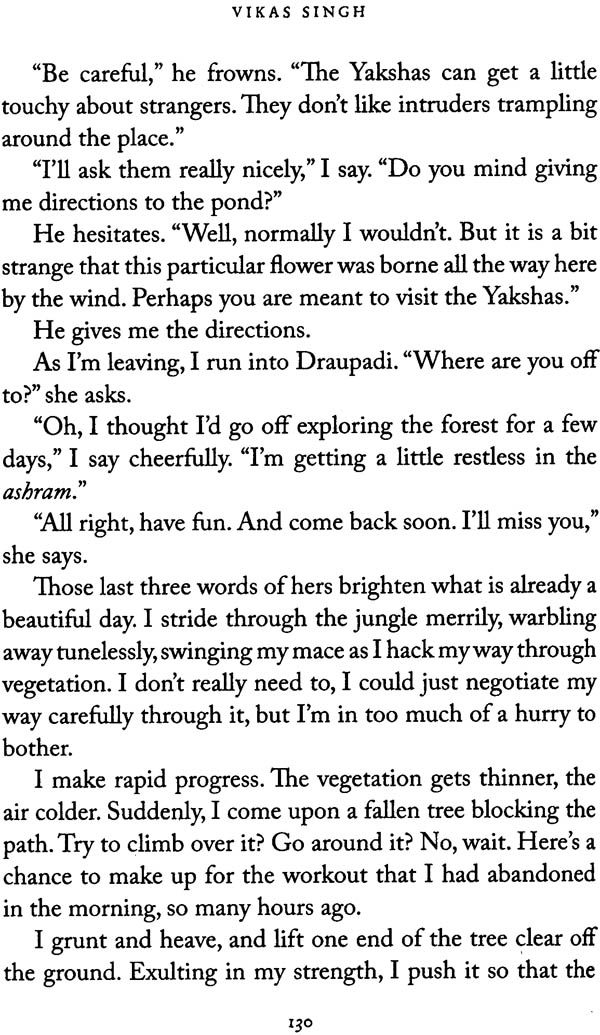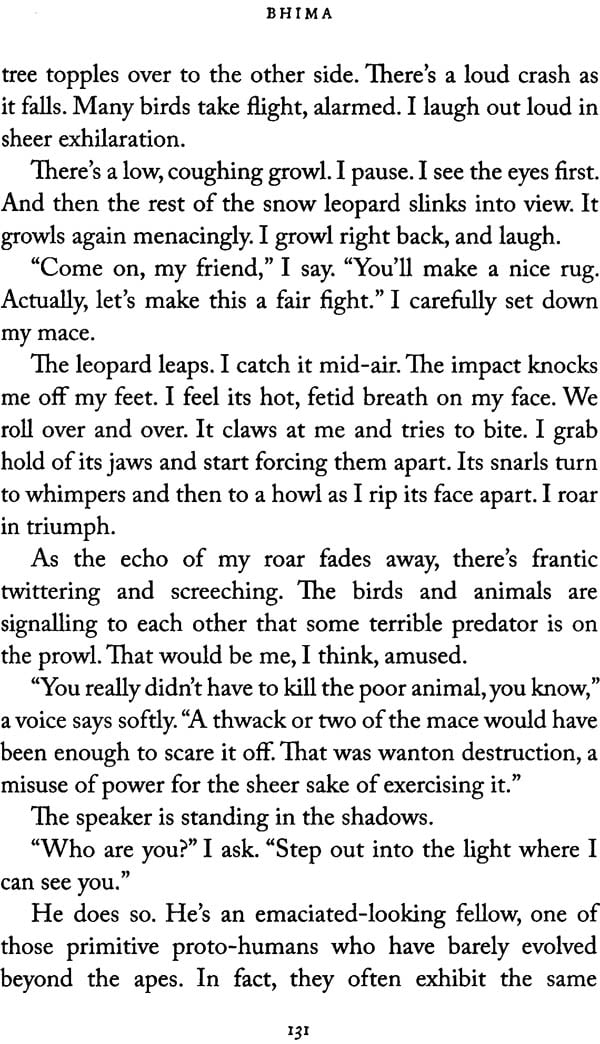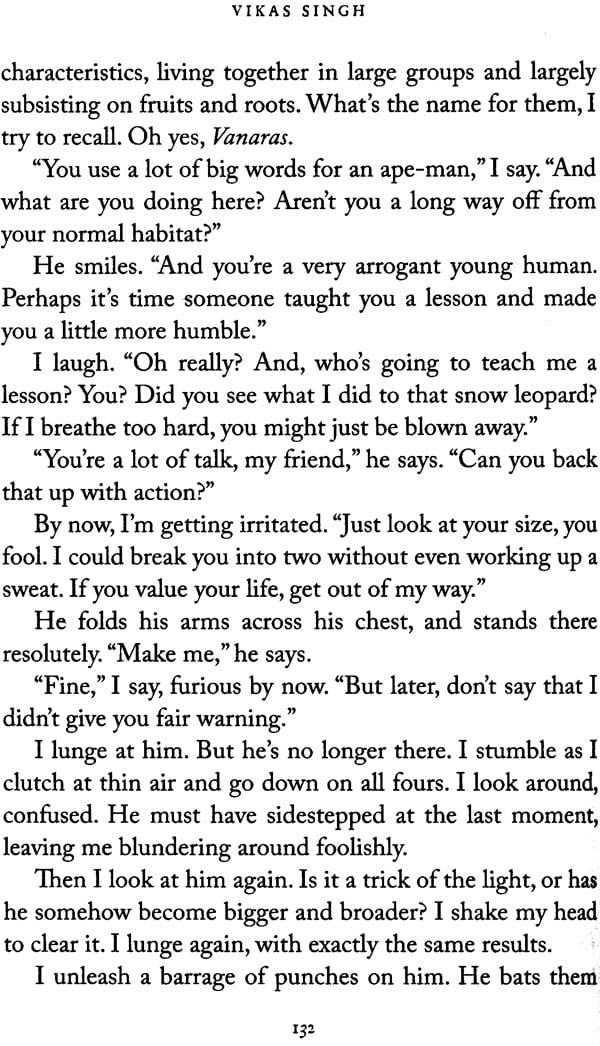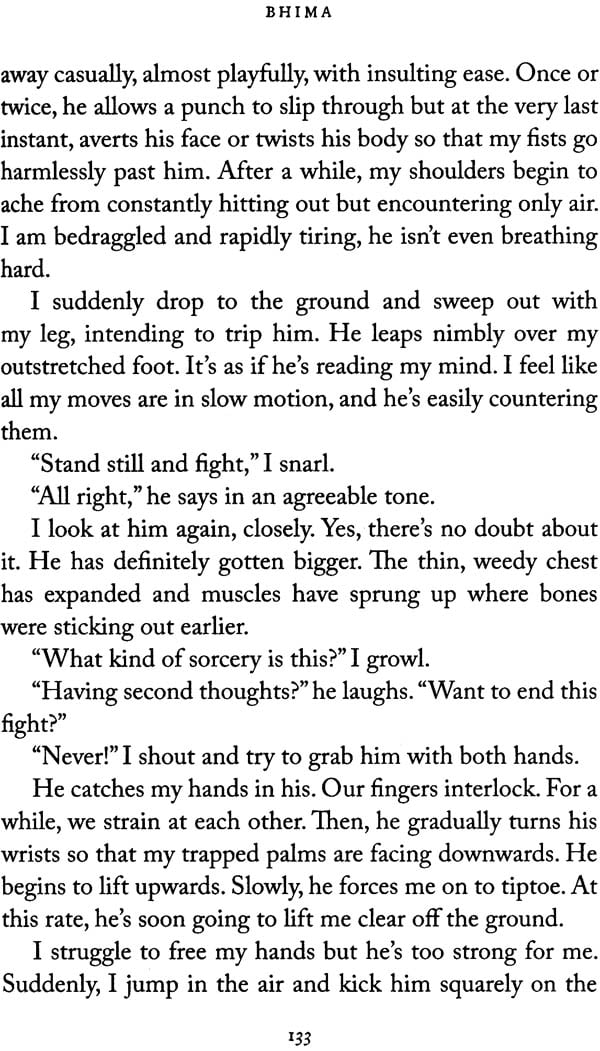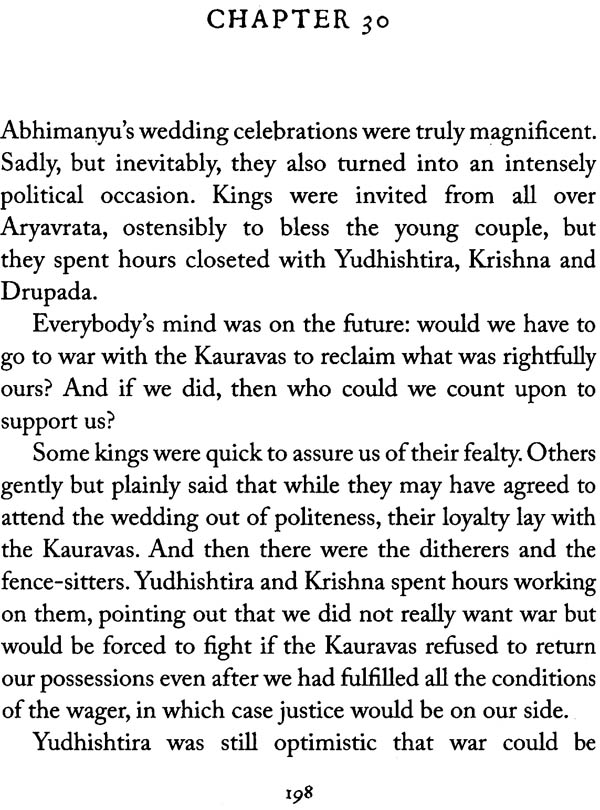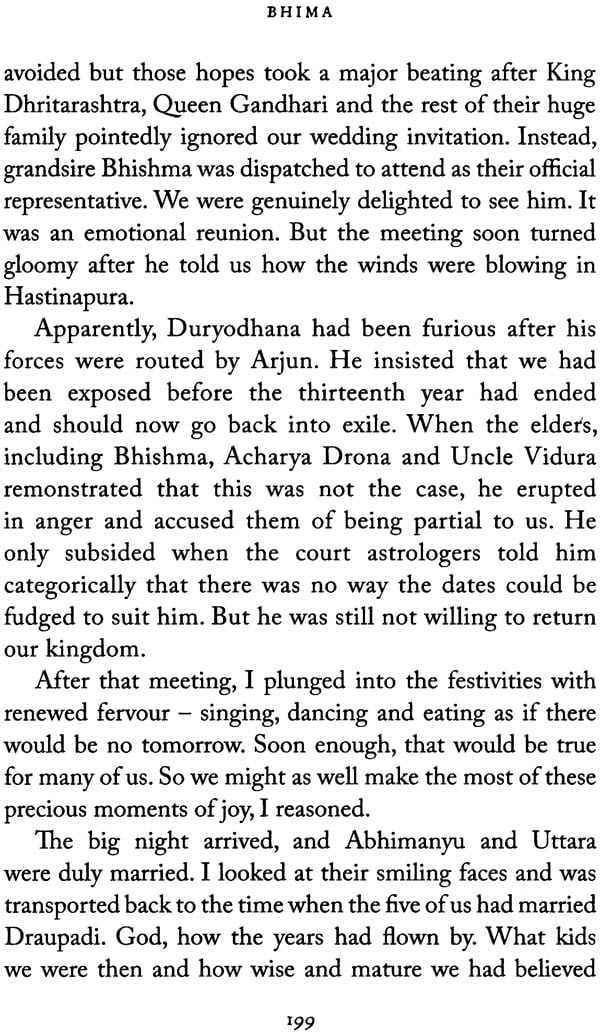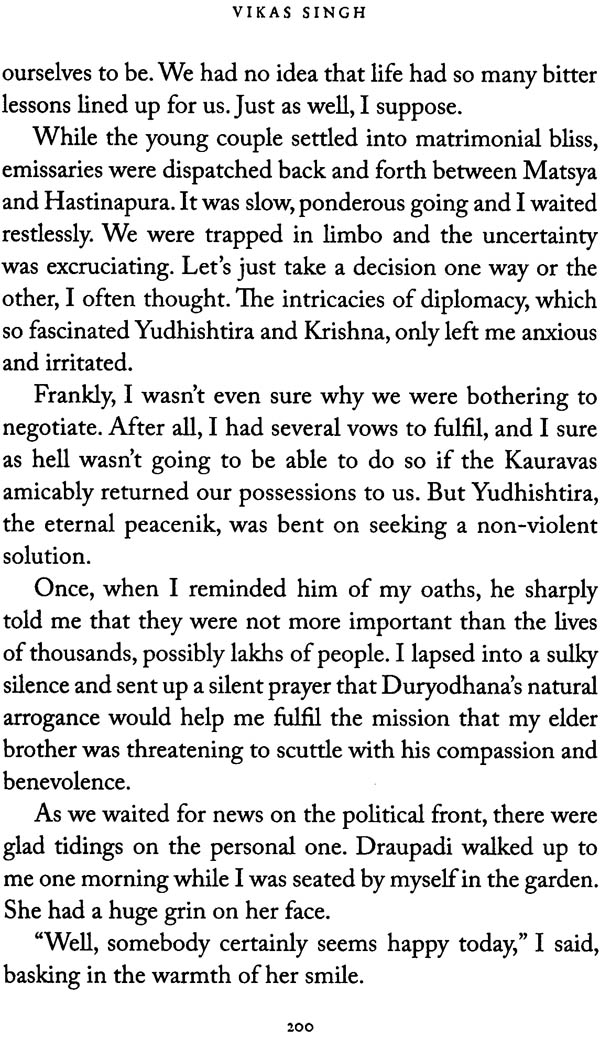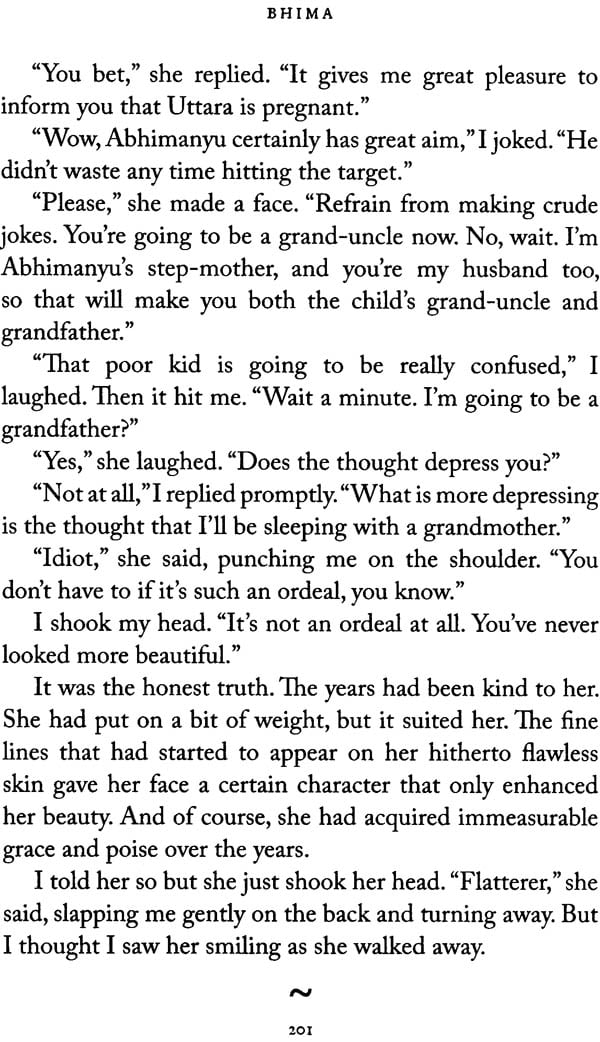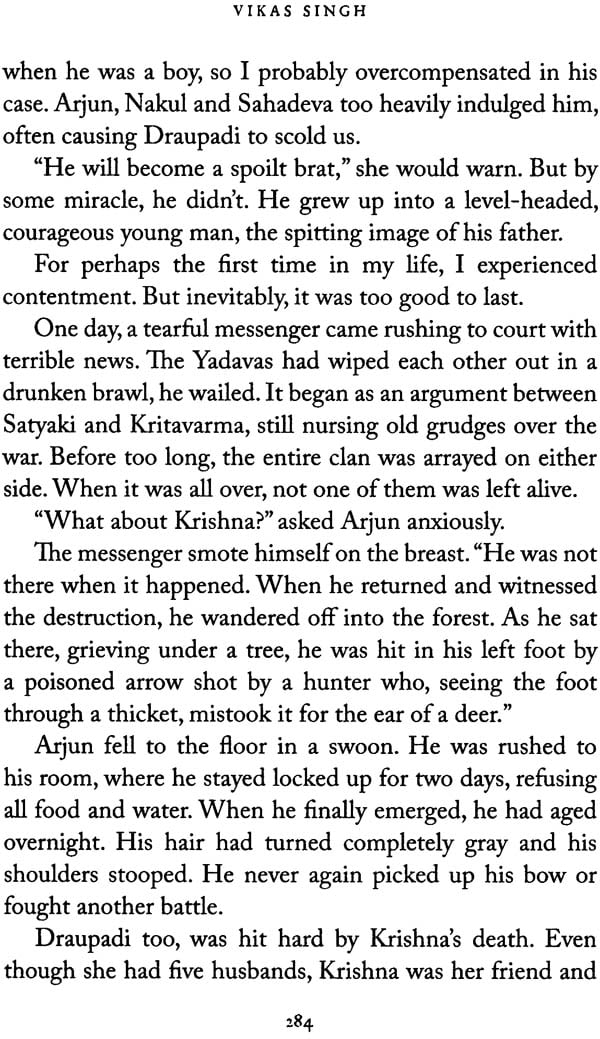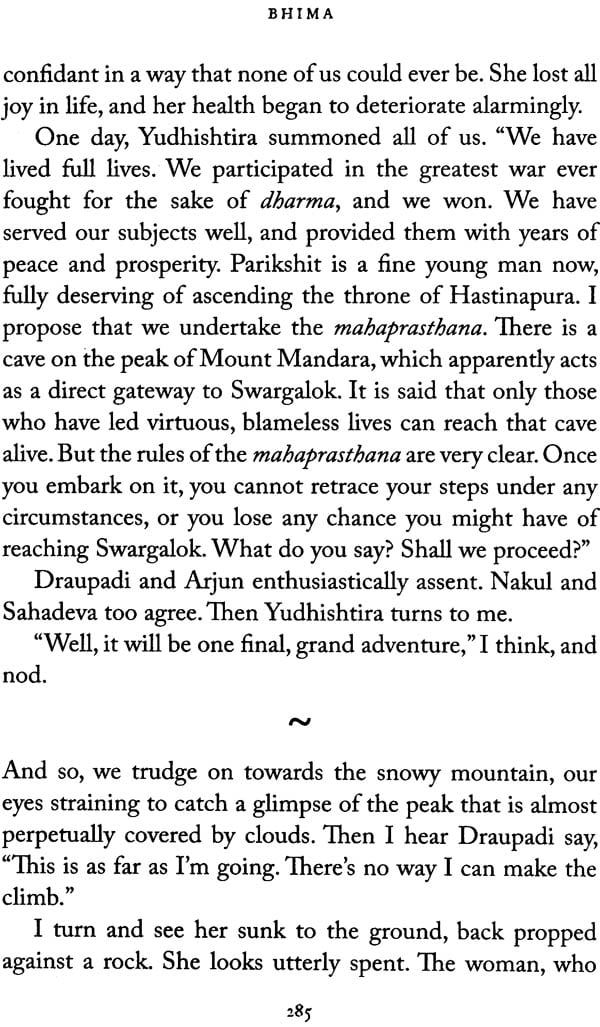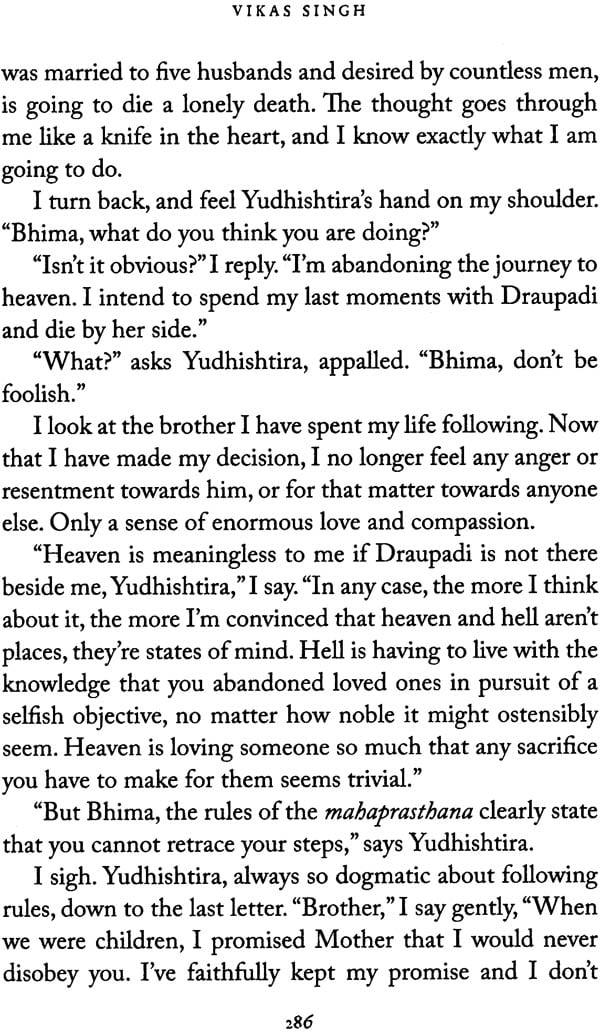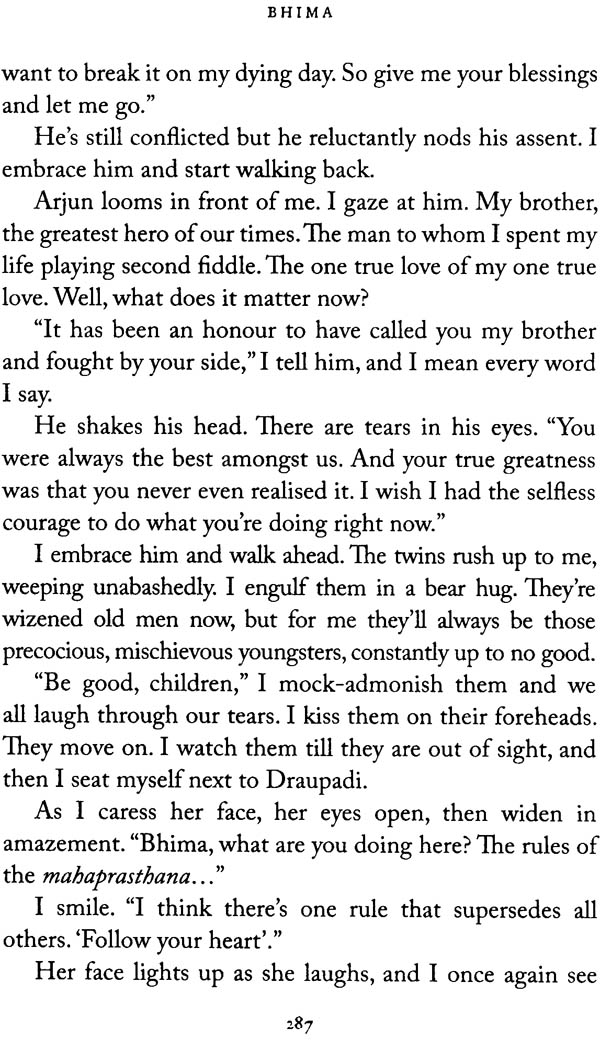
Bhima: The Man in The Shadows
Book Specification
| Item Code: | NAM002 |
| Author: | Vikas Singh |
| Publisher: | Westland Ltd. |
| Language: | English |
| Edition: | 2015 |
| ISBN: | 9789385152504 |
| Pages: | 300 |
| Cover: | Paperback |
| Other Details | 7.5 inch x 5.0 inch |
| Weight | 220 gm |
Book Description
I am half-man, half-superhuman. I am the mightiest warrior of my time. I have violated my dharma and murdered a man in cold-blood. I have, single-handed, wiped out a whole generation of my kinsmen. I have committed acts of unspeakable brutality on the battlefield. I have done it all for the love of one woman.
A woman who loves my brother.
I am Bhima, the second Pandava. This is my story.
Possessed of amazing strength, fierce loyalty and great tenderness, Bhima as a character is almost always eclipsed by Yudhishtira and Arjun. In spite of his many virtues, he is destined to be remembered as all brawn and biceps. Now, in Vikas Singh’s retelling of the Mahabharata, India’s greatest epic is narrated through the eyes of a hero who has never got his due.
A fascinating account of a fascinating character—his extraordinary courage, his obsessive love for Draupadi, his deeply conflicted emotions about his brother, Arjun—this stunning work, written in a racy, entertaining style, provides the definitive answer to the question: WHAT WAS IT LIKE TO BE BHIMA?
Heroes, aliens, envy, honour, romance. A fun read all the way.
The Mahabharata is quite simply, the greatest story ever told, which is why it has been retold endlessly, across generations. Any number of versions exist, and it is difficult to travel to any part of India—or indeed, several parts of South—East Asia—without encountering some local myth associated with the epic.
Like many Indian children, I was first introduced to the Mahabharata through the oral tradition, thanks to a grandmother who possessed both an encyclopaedic knowledge of the sage and a gift for storytelling. Before too long, I was devouring the various Amar Chitra Katha comics that have covered almost every aspect of the epic.
The Mahabharata has a rich array of diverse, fascinating characters. But I soon settled upon my favourite—Bhima. For one thing, there was his superhuman strength—and like many nerdy kids, I too fantasised about growing up to become the strongest man in the world. Also, it probably helped that my paternal grandfather was himself named Bhima. But mostly, I liked the fact that the Mahabharata’s Bhima was a dependable, no-fuss hero who actually got things done—killing Jarasandha and Keechaka, getting Draupadi the Saugandhika flowers, wiping out the Kauravas, fetching Draupadi the blood of Dusshasana to wash her hair and smashing the thigh on which Duryodhana had invited her to sit.
My fascination with Bhima deepened after I read ‘Second Turn”, the English translation of the great Malayalam writer M T Vasudevan Nair’s classic ‘Randamoozham’, ‘Bhimsen’, Prem Panicker’s transcreation of ‘Randamoozham’, too made for riveting reading.
But much as I loved Nair’s rationalist perspective, I felt that I had some (hopefully) interesting interpretations of my own to offer about the epic.
And so, I set out to write this book. As part of my research, I read several works on the Mahabharata. These included, naturally, the immortal classics like C Rajagopalachari’s ‘Mahabharata’, Pratibha Ray’s ‘Yajnaseni: The Story of Draupadi’, Irawati Karwe’s ‘Yuganta’ and SL Bhyrappa’s ‘Parva’. But I also found more recent works like Devdutt Pattanaik’s ‘Jaya: An Illustrated Retelling of the Mahabharata’; Chitra Benerjee Divakaruni’s ‘The Palace of Illusions’, Krishna Udayasankar’s ‘Govinda’ and ‘Kaurava’, Anand Neelakantan’s ‘Ajaya’ and Saraswati Nagpal’s graphic novel, ‘Draupadi: The Fire-Born Princess’ to be extremely illuminating and insightful.
Purists will say that I have messed around with the chronology of the original epic, skipped many important events, mashed up multiple stories into single episodes and completely changed yet others beyond recognition. They will be absolutely right. I have indeed done all of the above. My humble defence is that I was primarily focused on narrating the tale of Bhima’s passion for Draupadi and his deeply conflicted emotions about Arjun, and I happily took liberties with the original storyline whenever I felt the need to do so. I am quite positive that I am neither the first, nor will I be the last narrator to do so.
The sheer timelessness of the Mahabharata will ensure that it will continue to be endlessly re-interpreted, and it will only become more fascinating with each retelling, Reading the numerous versions of the Mahabharata has given me immense joy over the years. With this book, I hope to share a fraction of that joy with you, my reader.
